constituent assembly of india debates (proceedings)- volume vii
constituent assembly of india debates (proceedings)- volume vii
constituent assembly of india debates (proceedings)- volume vii
Create successful ePaper yourself
Turn your PDF publications into a flip-book with our unique Google optimized e-Paper software.
The extreme expression <strong>of</strong> the discontent prevalent in Chhota Nagpur is the separatist movement<br />
which demands the formation <strong>of</strong> a new province <strong>of</strong> Jharkhand out <strong>of</strong> the partially excluded area. This<br />
movement is sponsored at present by the Adibasi Mahasabha containing a very large advanced or<br />
Christian element but in Singhbhum and in the Santal Parganas also, a good proportion <strong>of</strong> non-Christians<br />
seem to have been affected by it. To borrow Dr. Sinha's words it is "capturing the imagination" <strong>of</strong> the<br />
tribals. Unmistakably also the movement is gaining sympathy among the non-aboriginals; and even if it<br />
be party due to mere local ambition, the virtual exclusion <strong>of</strong> tribal elements from the Cabinet has<br />
undoubtedly contributed much to it. We have already held in our interim report that the question <strong>of</strong> the<br />
formation <strong>of</strong> a separate province is not for us to tackle but we would invite the attention <strong>of</strong> the Provincial<br />
and Central Government to the separation movement, which seems to be gaining strength, as a<br />
symptom <strong>of</strong> the discontent which is simmering in varying intensity among all sections <strong>of</strong> the Chota<br />
Nagpur population. At the same time we have noticed that the Cabinet <strong>of</strong> the Bihar Government and<br />
such an eminent public man as Dr. S. Sinha oppose the separation movement on the grounds very well<br />
shown in the brochure <strong>of</strong> Dr. Sinha. We have also received a number <strong>of</strong> telegrams from these areas<br />
saying that they thoroughly disapprove <strong>of</strong> the separatist movement.<br />
We are inclined to the view which seems to be shared by Dr. Sinha also, that there should be<br />
adequate association <strong>of</strong> the people <strong>of</strong> the partially excluded areas, particularly the tribals, in the different<br />
branches <strong>of</strong> the administration including the Cabinet and that there can be neither satisfaction nor<br />
adequate progress until this is done. In short, the problem <strong>of</strong> administration in this tract must be dealt<br />
with not only by economic and educational improvements but also by remedies which recognise its<br />
political and psychological aspects; and we would lay the maximum emphasis on the urgency <strong>of</strong> action in<br />
both these directions.<br />
UNITED PROVINCES<br />
3. As regards the partially excluded areas <strong>of</strong> the United Provinces viz., the Jaunsar-Bawar Pargana in<br />
the Dehra Dun District and the area comprising the Dudhi Tahsil and part <strong>of</strong> the Robertsganj Tahsil <strong>of</strong> the<br />
Mirzapur District, we find that both <strong>of</strong> these comparatively small areas are suffering from serious neglect.<br />
Although a committee was set up as early as 1939 to enquire into the administration <strong>of</strong> the Jaunsar-<br />
Bawar Pargana and a report was submitted by it in1941, it is a matter for regret that no action has yet<br />
been possible although the report was ultimately made only by the <strong>of</strong>ficial members <strong>of</strong> the Committee.<br />
We understand that another committee has been appointed recently this year to go into the matter by<br />
the Provincial Government and hope that speedy action will be taken on its report. The main matters<br />
which require attention in this area are as follows: -<br />
(1) the fixation and collection <strong>of</strong> land revenue and distribution <strong>of</strong> "rights timber" through<br />
the agency <strong>of</strong> the Sayanas as well as the position <strong>of</strong> the Sayana in the village panchayat<br />
which gives rise to a great deal <strong>of</strong> oppression.<br />
(2) survey resettlement <strong>of</strong> the area and removal <strong>of</strong> restrictions on the possession <strong>of</strong> land<br />
and reclamation <strong>of</strong> waste land by Koltas (local depressed castes <strong>of</strong> Hindus).<br />
(3) the elimination <strong>of</strong> social evils like polyandry and venereal disease.<br />
In the partially excluded area <strong>of</strong> the Mirzapur District which is inhabited by a majority <strong>of</strong> tribals we<br />
find that the administration is <strong>of</strong> a pretty primitive character. The figures given in the U. P. Government's<br />
factual memorandum for the Dudhi Government Estate which are shown below indicate that the revenue<br />
from it is not utilised to the extent <strong>of</strong> even two-fifths <strong>of</strong> the administration <strong>of</strong> the area: -


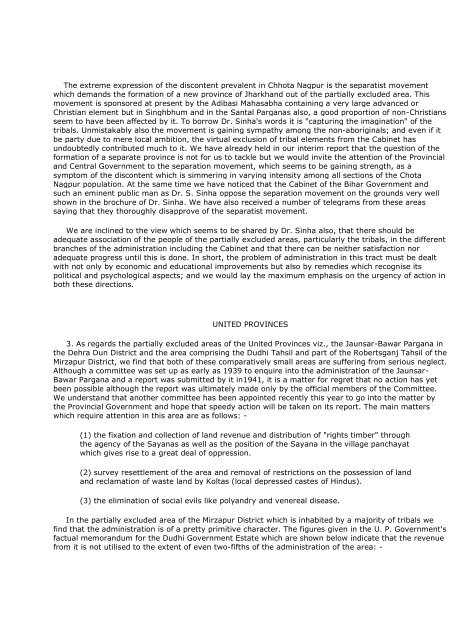
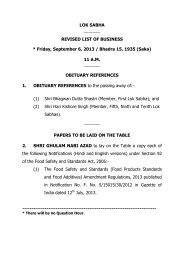
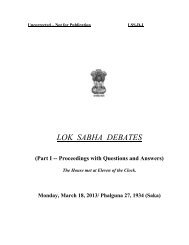

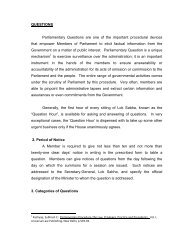
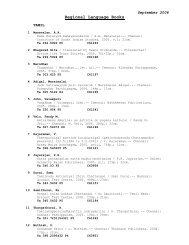

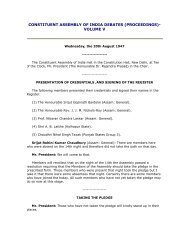
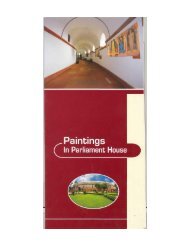
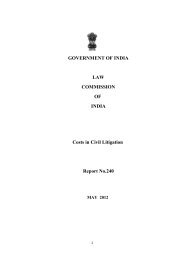
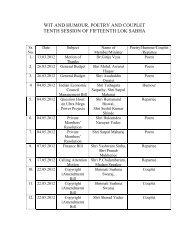
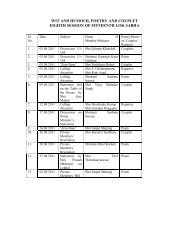

![gÉÉŌ A.]ÉŌ. xÉÉxÉÉ](https://img.yumpu.com/8015720/1/190x245/geeo-aeo-xeexee.jpg?quality=85)
